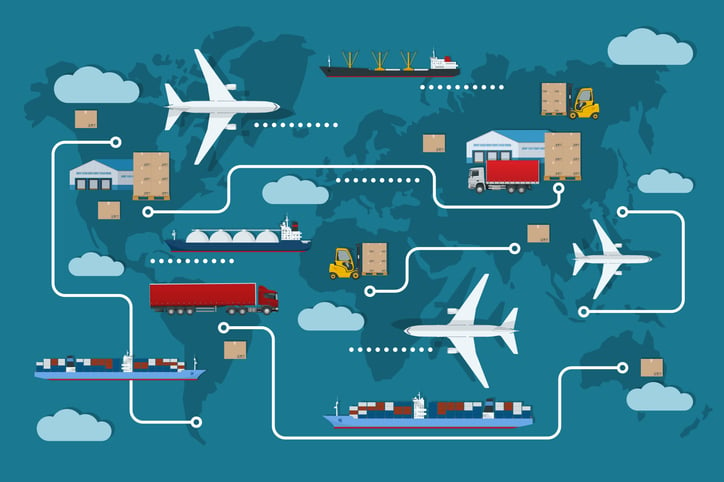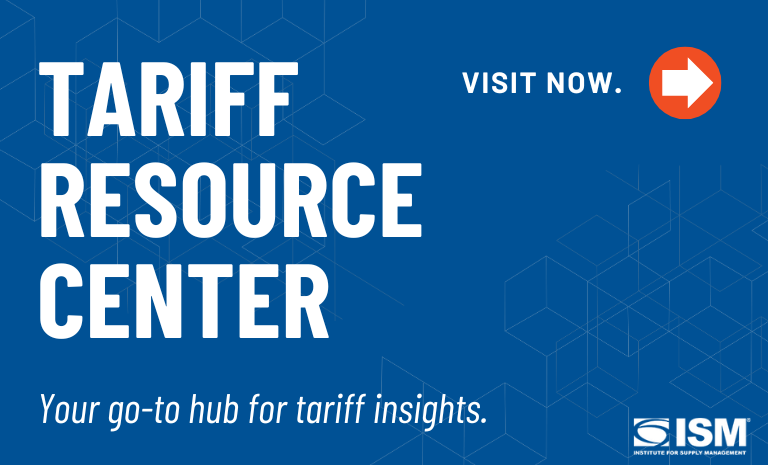Logistics Dos and Don’ts During Volatile Times

Given the volatility of tariffs, an uncertain economic environment and other disruptions, logistics companies face a variety of challenges, the biggest of which is learning to manage unpredictability.
Uncertainty is impacting sourcing decisions, delivery timelines and shipping costs, says Oswaldo Villanueva, CEO and president of VR International LLC, a logistics provider and commercial broker in Houston. It has also caused friction between retailers, manufacturers and logistics providers, he says.
“On top of that, the sector was already facing such challenges as inefficient port infrastructure, geopolitical trade tensions and a shortage of specialized labor. These existing issues have only worsened the situation. Logistics companies are now expected to do more, do it faster, and do it with less certainty.”
Villanueva offers thoughts about today’s logistics environment and some best on how logistics companies can manage volatility.
Question: Are there concerns that e-commerce will slow due to tariffs and disruption? What potential impact could this have on shipping, costs and last-mile delivery?
Answer: Yes, especially for companies that depend on low-margin, high-volume models. Temporarily, tariffs are being absorbed by manufacturers and importers, but it is only a matter of time before consumer prices begin to rise. That could slow consumer demand, which would affect order volumes and drive up shipping costs. This would force logistics providers to adjust their last-mile strategies, possibly turning to outsourcing for certain operations in order to maintain pace without exceeding their budgets.
Q: What actions or considerations should logistics companies take to make it through these volatile times?
A: They should diversify their suppliers, aiming to reduce costs and improve timelines on their transportation routes. Companies should also manage their internal resources efficiently and implement data analysis that leads to process optimization. If necessary, they should restructure contracts, opting for shorter terms with carriers and flexible warehousing. The goal is to be ready to adapt quickly when the environment changes.
Q: Can artificial intelligence (AI) and other technologies help build visibility and efficiencies?
A: Absolutely. Technology can analyze historical sales data and market trends, as well as detect seasonal change factors and disruption patterns at the origin, which leads to inventory optimization, better use of storage space, and more efficient use of financial resources. It can also forecast demand more accurately and even automate real-time route changes.
Tools like monitoring sensors improve shipment tracking and reduce blind spots in the supply chain, which allows companies to exceed their strategic goals. When combined with continuous learning of new technologies, companies can simulate different disruptive scenarios and adjust sourcing or pricing strategies before they are affected.
Q: Is there a framework or steps to take?
A: A useful framework is analyze, implement, automate and adjust. First, analyze risk exposure and areas of opportunity to evaluate vulnerabilities to potential losses, liabilities or outcomes that could arise in unpredictable scenarios. This gives a clear vision of the next steps.
Second, implement the necessary changes that prioritize survival, flexibility and resilience in uncertain environments. This means putting into practice the planned strategies and measures to manage the risks identified in the organization.
Third, automate as much as possible, especially data collection, with tools that can centrally manage information. This allows the team to focus on strategic activities without spending hours on low-value tasks.
Finally, adjust your logistics and business strategies based on long-term trends, not just short-term cost reduction. This involves reviewing all aspects of a company’s logistics in order to respond effectively to changes in the current environment.
Q: What makes some logistics companies stand out? What are they doing differently?
A: The companies that stand out are proactive in scenario planning and tech investment. They do not wait for disruption to push them into making changes. They experiment, focus on customer needs, build strong relationships with their suppliers, and can quickly adapt to changes in demand, supply chain disruptions and new market trends. They also train their teams to interpret data and make real-time decisions, which is a key differentiator in a highly competitive sector.
Here is an example: Let us suppose an American company sources components from China. When tariffs rise, instead of exploring other regions or free-trade partners, it continues operating as usual and passes the cost on to customers. Meanwhile, a competitor starts sourcing from Vietnam and Mexico, uses technology to model cost impacts, and shifts part of its operations to warehouses in the U.S. It avoids price hikes, builds customer loyalty, and gains market share during the same disruption.
Q: What barriers do logistics companies face in managing logistics tension or disruption, investing in technology and following a framework?
A: Budget is often the main obstacle, especially for smaller companies. Then there is the issue of integration. New tech tools do not always work well with traditional systems. Fluctuating fuel prices, poor third-party collaboration and constantly changing regulations are just a few more of the challenges that must be overcome to thrive in such a volatile economy.
Some companies also lack internal alignment. If leadership does not have a more agile and tech-driven mindset, implementing change becomes difficult. And let us not forget talent. It is hard to find people with experience in both logistics and data management.
Q: What are the common mistakes logistics companies or providers make during times of volatility?
A: Frequently changing strategies is a serious mistake. It is important to allow time for implementations to mature and show results. Cutting labor or inventory too drastically is another common error. The cost of replenishing them will be much higher when things improve.
Clinging to inflexible contracts is also a problem. Companies must understand that volatility affects both clients and suppliers. Another mistake is being reactive instead of proactive. When companies wait too long to plan changes, diversify suppliers, or adopt technology, they end up in trouble when disruption hits. Lastly, ignoring communication with clients during delays can damage long-term trust.
Q: What are the don’ts?
A: Do not assume that what worked before will still work now. Do not rely on a single carrier or supplier. Do not postpone tech adoption because it seems risky. Doing nothing is even riskier. And do not isolate your logistics team from other departments. Cross-functional communication is key to managing uncertainty.
Q: How do logistics companies maintain morale and performance during long periods of volatility?
A: The answer is transparency and empowering teams. They need to understand the challenges the company is facing and have the tools and authority to engage and solve problems. A culture that encourages learning, adaptability and collaboration is essential when uncertainty becomes the norm.

